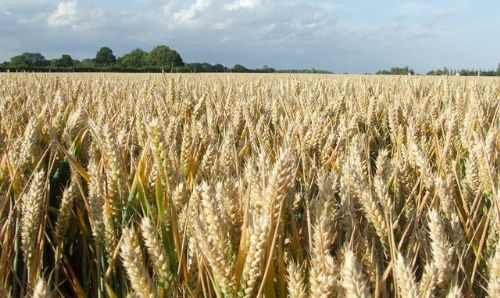
The open field GM wheat trial in Harpenden will go ahead after the police halted the planned destruction of the site on the 27th May.
The protests sparked a broad public debate throughout the UK. Groups against the trial argued that the research project was unnecessary and would pose risks to the environment. But an online petition against the trial destruction received over 6000 signatures.
The protest group Take the Flour Back had announced publicly that they intended to destroy the trial field at the Rothamsted Research Institute. Campaigner Kate Bell said "We wanted to do the responsible thing and remove the threat of GM contamination, sadly it wasn’t possible to do that effectively today. However, we stand arm in arm with farmers and growers from around the world, who are prepared to risk their freedom to stop the imposition of GM crops."
As part of publicly funded research, a mechanism used by some plants to protect themselves against aphids was transferred to wheat. A large proportion of conventionally grown wheat in Britain is currently treated with broad-spectrum insecticides to control aphids.
The aphids suck sap from the plants and transmit viruses, so can cause considerable damage to crops. Repeated use of insecticides can lead to the pests developing resistance and can harm non-target organisms. Moreover, insecticides have to be applied using agricultural machinery, which uses energy.
The transgenic wheat carries a gene similar to one found in peppermint which contains information for a chemical alarm signal that deters aphids: the aphids move away as soon as they come into contact with the E-farnesene.
As well as deterring aphids, the substance also attracts their natural enemies, including ladybirds. In addition, the wheat carries a gene for an enzyme that produces the molecule for E-farnesene. This enzyme, farnesyl pyrophosphate synthase (FPPS), is present in almost all organisms, although there are species-specific differences in the gene sequence.
Wheat naturally contains an FPPS gene, but the transgenic wheat variety has had an additional FPPS gene inserted so that it produces E-farnesene more efficiently. The added FPPS gene is synthesised artificially. Its DNA sequence is closest to that found in cows.
It was this alleged "cow gene" that provided the inspiration for the logo used by the Take the Flour Back campaign: a loaf of bread with the legs and head of a cow. The idea that an animal gene had been added to wheat set lots of people against the research project.
But the protesters’ main fear is cross-pollination. This would be a problem not only because of the two inserted genes, but also because of the plant’s resistance to the herbicide glufosinate, which is conferred by a marker. If the plants were to outcross, wild grasses could develop glufosinate resistance.
Recent research has found that varieties of GM wheat are outcrossing to other plants at a rate six times higher than conventional varieties.
The findings show wheat can outcross from commercial fields to crops over 2.75 kilometres away.
The trial’s opponents also believe it is conceivable that the pheromone could harm non-target organisms or that a change in the aphids’ behaviour and modification of the wheat plants’ make-up could lead to changes in the ecosystem.
The scientists responded to these concerns saying that the purpose of the current field trial is to investigate potential agroecological impacts. They claim that the risk of outcrossing is almost zero, since wheat is a self-pollinating plant. Nevertheless, a buffer strip of conventional wheat has been planted around the trial field and there is a fence to prevent plant material being carried off the field by animals.
Another of the protesters’ accusations is that the research project is unnecessary. The genetic modifications have been carried out on spring wheat, which is hardly grown in the UK and is not affected by aphids. They claim that experience with insecticide- and herbicide-resistant GM plants has generally shown that pests develop resistance, leading eventually to an increased use of chemicals.
The scientists stress that spring wheat is just being used as a model plant in this instance and that the new genes can be transferred to winter wheat at a later date without any problem. They say that companion cropping is very labour-intensive and is mainly suitable for small subsistence farms, e.g. in Africa. It would be too costly, however, for Britain’s high-performance agricultural sector.
Anti-GM campaigners question the scientists’ claim that the trial is purely for public research and is not intended for commercialisation or patent purposes.
They cite the Rothamsted Research Institute’s numerous industrial partnerships. If the plants are in fact grown, they claim, they will have to be marketed commercially, and only large corporations would have the necessary resources.
Scientists seek publicity
Because Take the Flour Back did not call off the planned destruction, the trial field was eventually given police protection.
The demonstration in Rothamsted Park remained peaceful and lasted several hours. The following night, however, the institute’s website was down for several hours as the result of a cyber attack.
